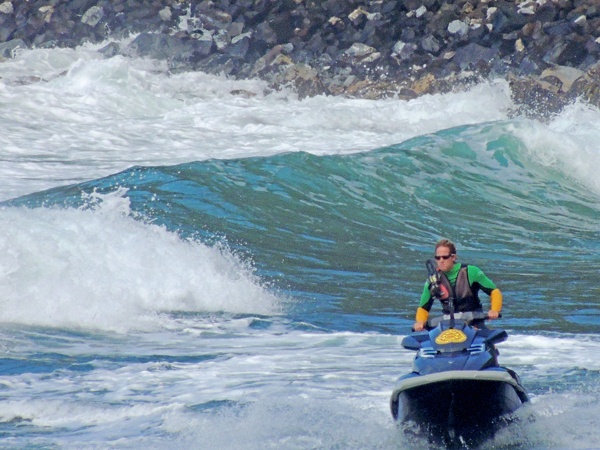LIHU‘E — A Senate Concurrent Resolution introduced March 13 is requesting the Hawai‘i Tourism Authority work with airline companies to show ocean-safety videos on all Hawai‘i-bound flights. While the idea is not new, Kaua‘i Visitors Bureau Executive Director Sue Kanoho
LIHU‘E — A Senate Concurrent Resolution introduced March 13 is requesting the Hawai‘i Tourism Authority work with airline companies to show ocean-safety videos on all Hawai‘i-bound flights.
While the idea is not new, Kaua‘i Visitors Bureau Executive Director Sue Kanoho said the resolution is “a move in the right direction.”
“I’m not sure how they are going to do it, but we support the message,” she said. “We tried to do that in the past and it’s been a difficult nut to crack.”
Senate Vice President Ron Kouchi was among those who introduced SCR 143, which was referred March 19 to two Senate committees — Tourism and Hawaiian Affairs and Transportation and International Affairs.
Kouchi said beach-safety videos were previously shown on Hawaiian Airlines flights and that the resolution would provide “an opportunity to reach (visitors) before they get here.”
“(In) as many different ways as we can, we need to make every effort,” he said of educating visitors about Hawai‘i’s dangerous ocean conditions.
The resolution specifically mentions Kaua‘i, where waters have claimed the lives of 10 individuals — seven of them visitors — so far this year. In 2012, Kaua‘i recorded four drownings, two ocean and two freshwater.
“2013’s pace is relatively high for Hawai‘i, which usually sees approximately 60 to 70 accidental deaths among nonresidents a year,” the resolution states. “The high number of deaths in the beginning of 2013 follows an increase in visitor fatalities in recent years — something officials say is likely due to several factors, including tourists searching out remote areas to explore or overestimating their swimming abilities in unfamiliar ocean currents.”
The resolution recognizes airlines as “key players” in the Hawai‘i visitor experience, which could help share the important message of ocean safety with millions of visitors who arrive here annually.
Former lifeguard Pat Durkin, who heads up the Water Awareness Visitor Education program, said that although the resolution addresses the importance of drowning prevention, he remains skeptical that the video’s content will be strong enough.
“What kind of teeth are you going to be able to put in (the video)? … When you’ve gone through what we’ve gone through in the last two months, I want to put skull and crossbones at every beach,” he said.
Durkin also questions how many people actually pay attention to in-flight monitors nowadays, with so many electronic gadgets as distractions.
“I haven’t looked at an airplane monitor in a couple years,” he said. “I have an iPad.”
Despite his concerns, Durkin said he is happy to see the problem being recognized by the Legislature.
“We’ll just have to see what comes out of it,” he said.
If passed, Kanoho agreed that she would like to see the video portray a stronger message than what was shown on Hawaiian Airlines beginning in 2005, perhaps with before-and-after photos of dangerous areas — such as Lumaha‘i — during high surf.
“I’m all for making sure the message is impactful and hopefully it will plant the seed for ‘Know before you go,’” she said.
While she agrees that an in-flight video would bring additional awareness to the situation, Kanoho said it is important that visitors educate themselves on current conditions before venturing out.
“It’s kind of on the visitor to know and not just assume … If you understand the conditions, you know the risk.”
A date has not been set for a committee hearing on SCR 143.


